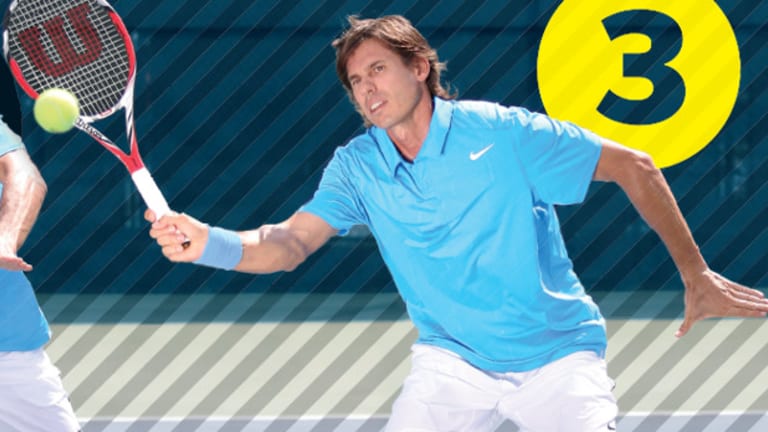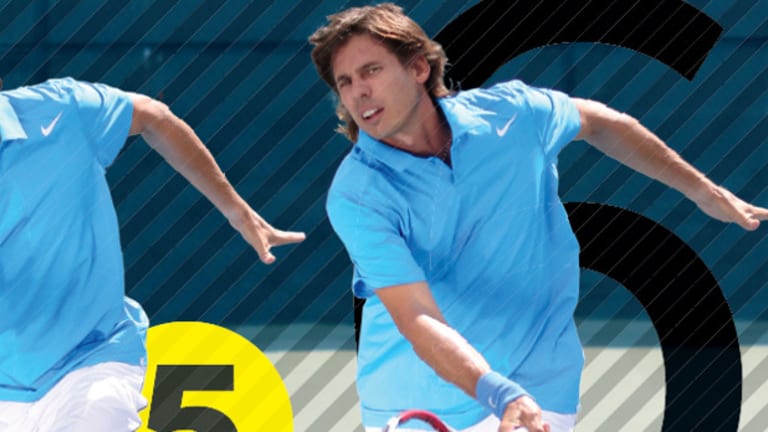The approach shot disappeared for a while at the end of the 1990s because advances in racquet technology neutralized the game’s great transitional volleyers, players like Pat Rafter, Stefan Edberg and Martina Navratilova. Today, the approach is making a comeback in a slightly different form. Instead of a low chip or a deep shot that gives you time to move forward, the approach shot is now one of the most offensive shots in the sport. The plan is simple: When you get a midcourt ball, hit an offensive groundstroke and follow the ball to the net for a dynamic volley. With the speed of today’s game—and it’s faster at the recreational level, too—it’s safest to cover the down-the-line passing shot when you approach. Now we’ll look at the modern forehand approach and volley, step-by-step.
Shot 1: The Approach
Hitting a big shot down the line is the highest-percentage approach and the most common on the pro tour. It rushes your opponent to hit a passing shot while allowing you to move close to the net for an easy volley. Let’s take a look at a forehand inside-out, midcourt approach that stretches your opponent into the backhand corner....






